Organizations use content marketing to educate and nurture audiences. And creating helpful content that also leverages search engine optimization (SEO) best practices gives them the best chance of maximizing visibility in search results.
In other words, marketing works best when content and SEO go hand-in-hand.
In this article, we’ll cover what you need to know to combine the two approaches to maximize organic content visibility.
What Is Search Engine Optimization?
SEO is the process of making improvements to your website to improve its visibility in search results from search engines like Google and Bing.
For example, NerdWallet, a publisher in the competitive personal finance niche, features in the top organic (unpaid) spot on the search engine results page (SERP) for the search term “starter credit cards.”

And improving your rankings can increase organic traffic to a website.
How?
When your webpages rank well in SERPs, they typically get more impressions and clicks. Which means more people read and interact with the content on your site.
This is important for companies selling products or services online, digital publications that earn revenue through on-page ad placements, or any website that wants to increase traffic from search. Which encompasses pretty much every website.
And there are three main areas of SEO:
- On-page SEO: Involves optimizing parts of your webpages and focuses on elements like content quality, keywords, meta descriptions, and subheadings
- Off-page SEO: Involves improvements made outside of your website like acquiring backlinks (links from from other websites that point to your site) and distributing content via social media
- Technical SEO: Involves optimizing the technical and structural components of your website for increased performance and a better overall user experience
What Is Content Marketing?
Content marketing is the creation and distribution of helpful content to drive interest and engagement with a target audience.
Content marketing takes many forms. Some of the most common formats are:
- Blog posts
- Emails—including newsletters
- Demand generation assets like ebooks, white papers, and buyer guides
- Case studies
- Videos
- Podcasts
Need an example?
Management consulting firm McKinsey & Company creates articles and downloadable assets like this ebook on emerging technology trends to appeal to its audience.
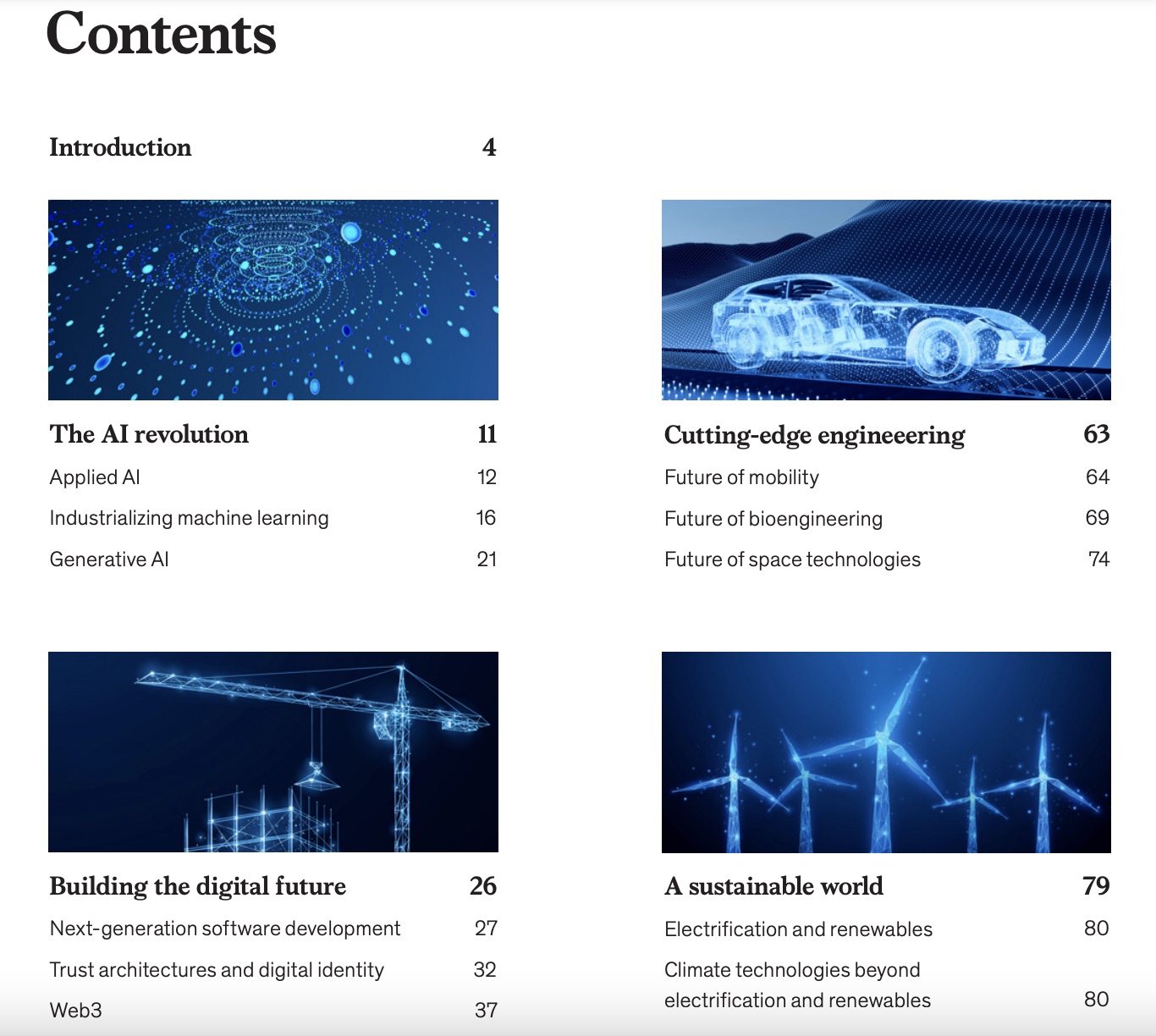
Content marketing aims to educate and entertain audiences.
So, it’s typically less promotional than other types of marketing. But often takes advantage of a customers’ interest in topics across the entire marketing funnel.
How Content Marketing Helps SEO
Effective content marketing bolsters SEO efforts by generating backlinks, driving media attention, and providing a good experience for your audience.
People often group content marketing and SEO into different buckets. But content marketing is actually a crucial part of off-page SEO.
Let’s revisit backlinks to understand this better.
When high-authority sites include links back to your content, search engines view these as votes of confidence.
Google says it’s increasingly de-emphasizing links as a ranking factor. But few would deny they’re still important.
Apart from links, content marketing can also spur media attention. Especially when your content includes unique data. Or shares knowledge, expertise, and insights not easily found elsewhere.
When notable publications reference your content, it can increase branded search queries for your company. And drive more people to your site.
Finally, content marketing that focuses on quality provides a good experience for readers.
When you write comprehensive and useful content about a topic, it’s more likely to be helpful to users. And more likely to rank well in search results.
So, how can you use content to impact SEO?
Let’s say you create a long-form blog post on a core business topic.
Aside from priming it for visibility in organic search, you can share it via a variety of distribution channels, such as:
- Email newsletters
- Organic social posts
- Social ads
- Earned media, such as guest posts or press mentions
All of these channels aid your site’s SEO by building brand mentions, social visibility, and other positive off-page signals.
Need further proof of how a smart approach to content marketing can improve SEO?
Check out the case of the Cleveland Clinic. The organization switched to an audience-driven content strategy and saw enormous success (shown in the chart below from Domain Overview) as a result.
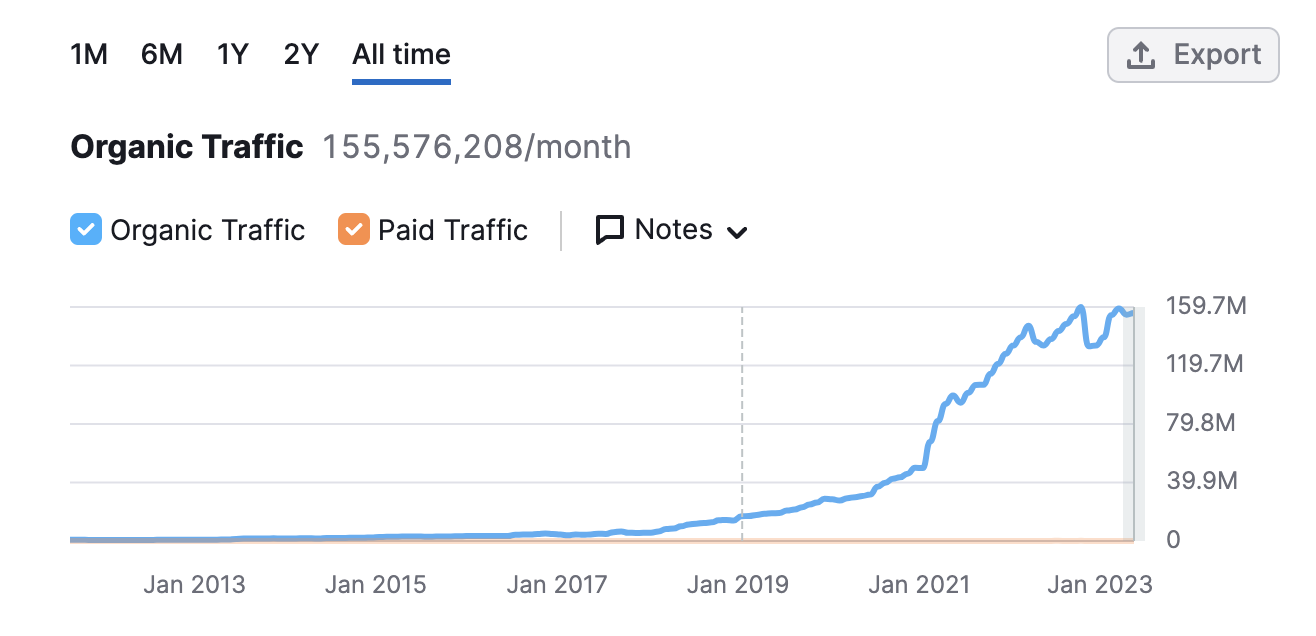
Bringing SEO and Content Marketing Together
Here are some ways you can use content marketing and SEO together to get better results:
Design Your Content with People & Search Engines in Mind
Create helpful, relevant content that users love and that search engines can easily interpret.
To find out what readers find useful, you first have to understand your readers’ problems in a deep way. Meaning you have to understand search intent.
Search intent is the reason why a reader conducts a certain search.
There are four types of search intent:
- Informational intent: The user is looking for information on a specific topic. For example, a user looking to understand a type of boot construction may search “what is goodyear welt?”
- Navigational intent: The user is looking to find a specific brand or page. For example, “thursday boots about page.”
- Commercial intent: The user wants to undertake research during a buying process. For example, “thursday boots versus allen edmunds.”
- Transactional intent: The user is looking to complete a translation, such as purchasing from an online store. For example, “buy thursday boots.”
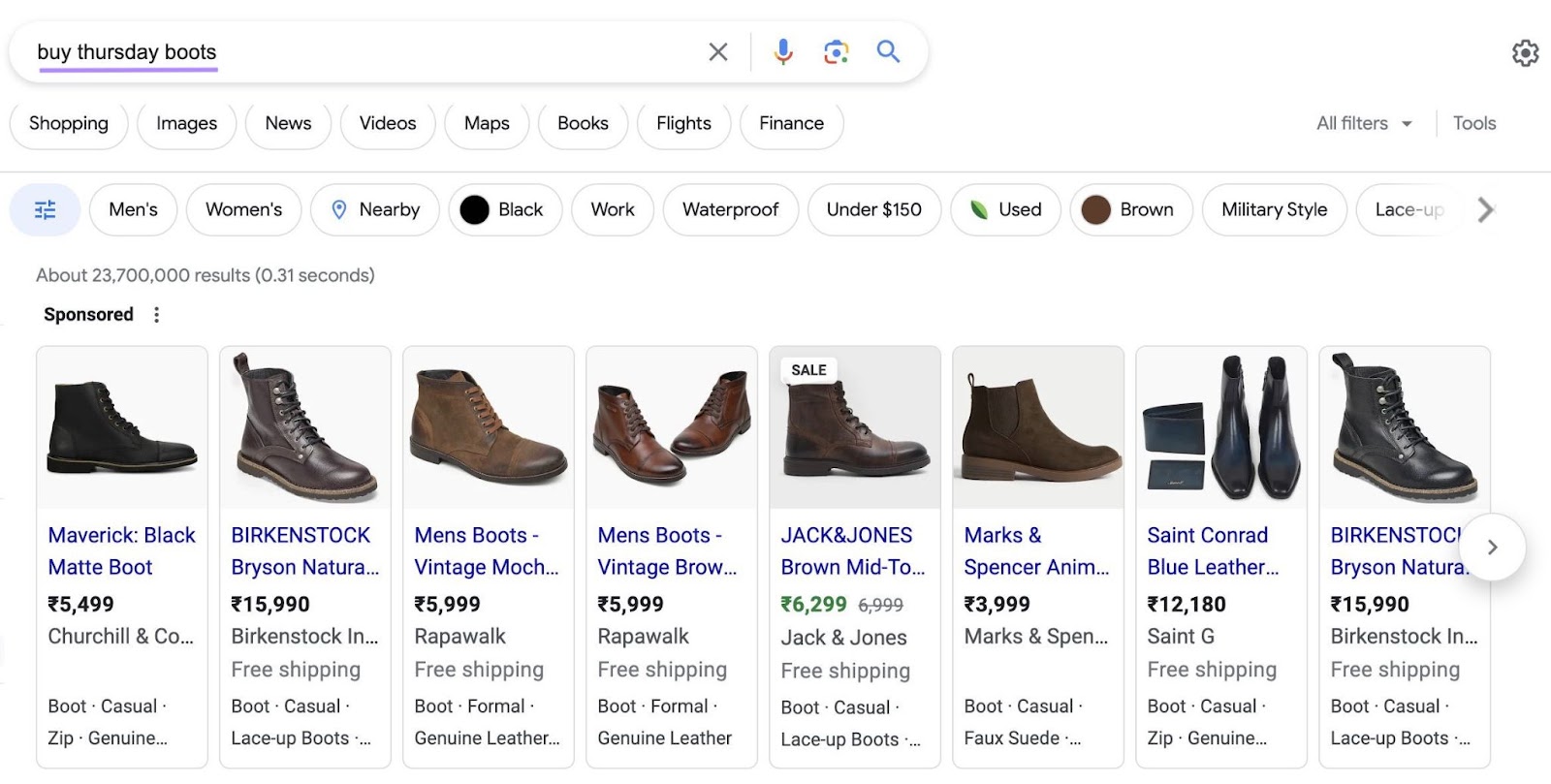
How can you interpret search intent?
For starters, you can look at the content on the SERP for a given query. And study the different content formats and even the paid results to gain an understanding of the intent behind the search.
You can also use the Keyword Overview tool to get quick insights into search intent.
Open the tool, enter at least one keyword (or up to 100) to research, choose a location, and click “Search.”

Search intent information for your chosen keyword appears in the “Intent” widget.

Once you understand the intent behind a given search, you can start creating content that matches what searchers are looking for.
Keep Up with Continual Content Production
Publishing and distributing new content on a consistent basis can maximize your returns from SEO.
First off, we should clarify something. Google has confirmed that publishing frequency is not a ranking factor.
But publishing regularly is still a good idea.
In fact, content and SEO professionals seem to associate increased publishing with greater success.
In our 2023 content marketing industry survey, more than half of respondents said posting more content helped them boost their rankings.

Why?
Because each new piece of content signals that you’re still publishing and relevant. And creates more opportunities for you to rank for keywords and drive more traffic.
Building up your content around topics relevant to your niche can increase your authority as well.
SEOs and content marketers can use analytics and other technical tools to ensure content gaps continue to be filled on a regular basis.
You can use Keyword Gap to do this. So you can continue covering valuable topics.
Open the tool and enter your domain and the domains of up to four competitors. Then, click “Compare.”

You’ll then see a chart showing how your keyword rankings compare with your competitors’ rankings. And a few suggestions for keywords you can target.
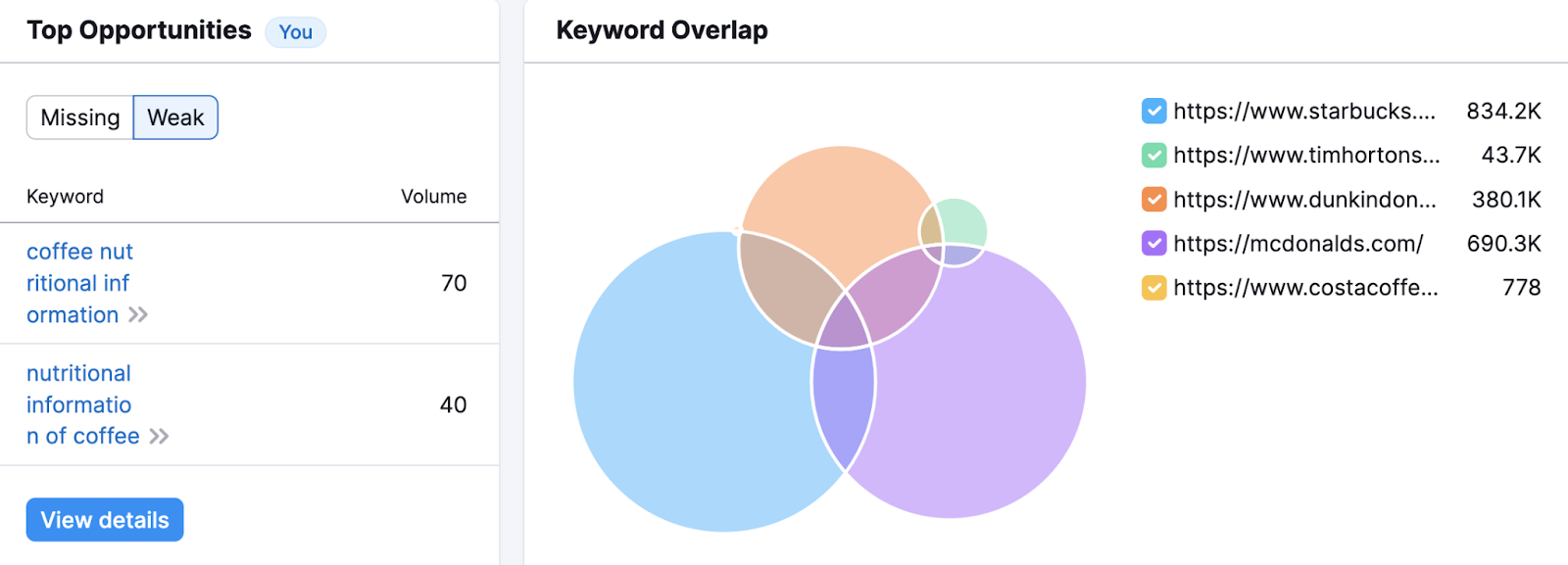
Scroll down to the table and make sure your domain is entered in the “All keyword details for:” field.
Then, select the “Missing” button.
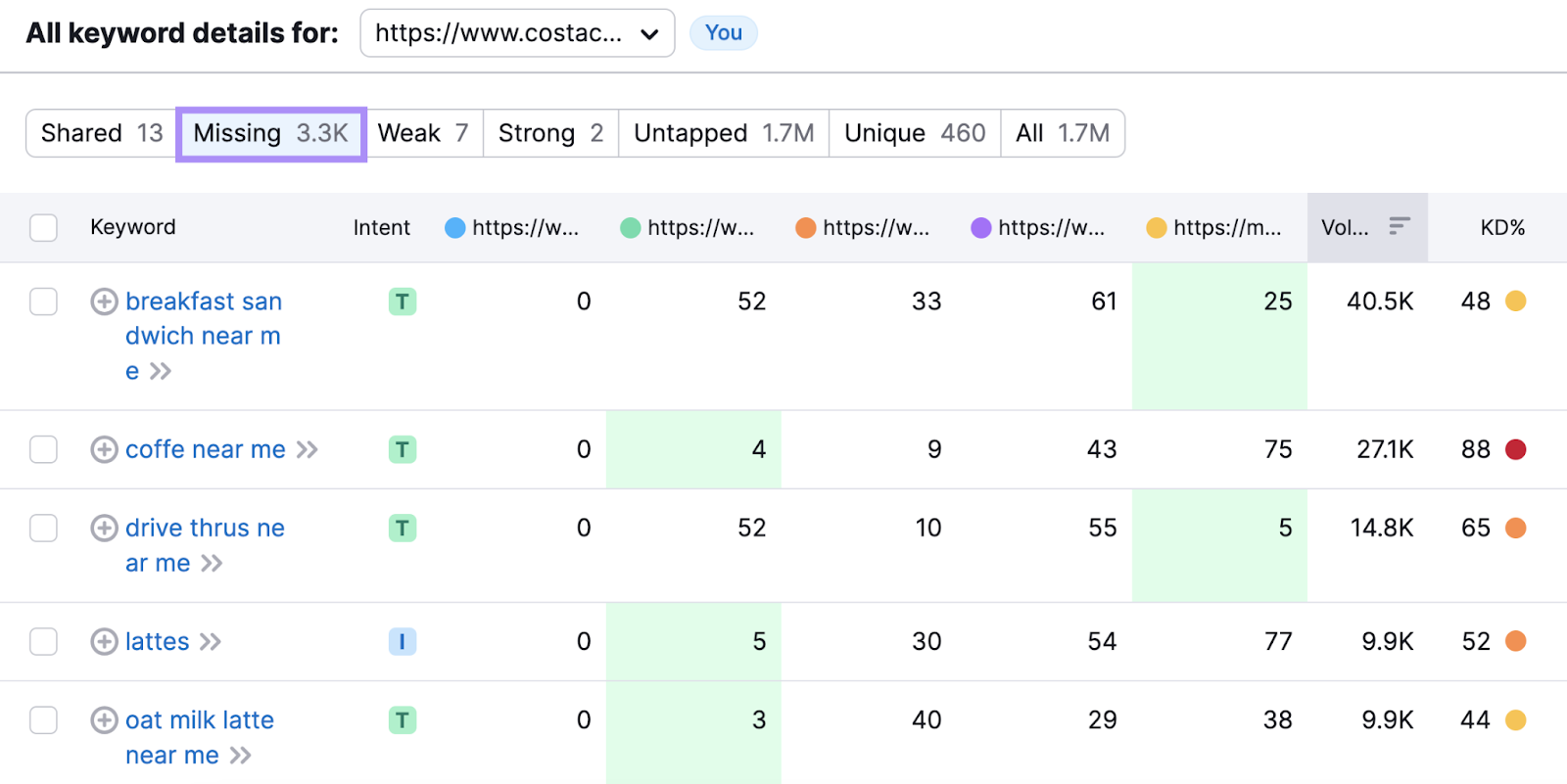
You’ll now see a list of keywords all your competitors rank for but you don’t.
Evaluating these keywords can help you identify topics you’ll want to focus on in the future.
Evaluate the Value of Your Backlinks
Evaluating your backlinks lets you see whether they’re adding value. And can inform your link building efforts.
Links from reputable and topically relevant sources can be a boon to your SEO efforts.
Why?
Because search engines see backlinks from relevant, authoritative sites as confirming their confidence in your site.
Semrush’s Backlink Audit tool is a great option for evaluating your site’s backlink profile.
To get started, enter your domain in the search bar and click “Start Backlink Audit.”

Next, follow the prompts to configure your audit. And click “Start Backlink Audit.”.
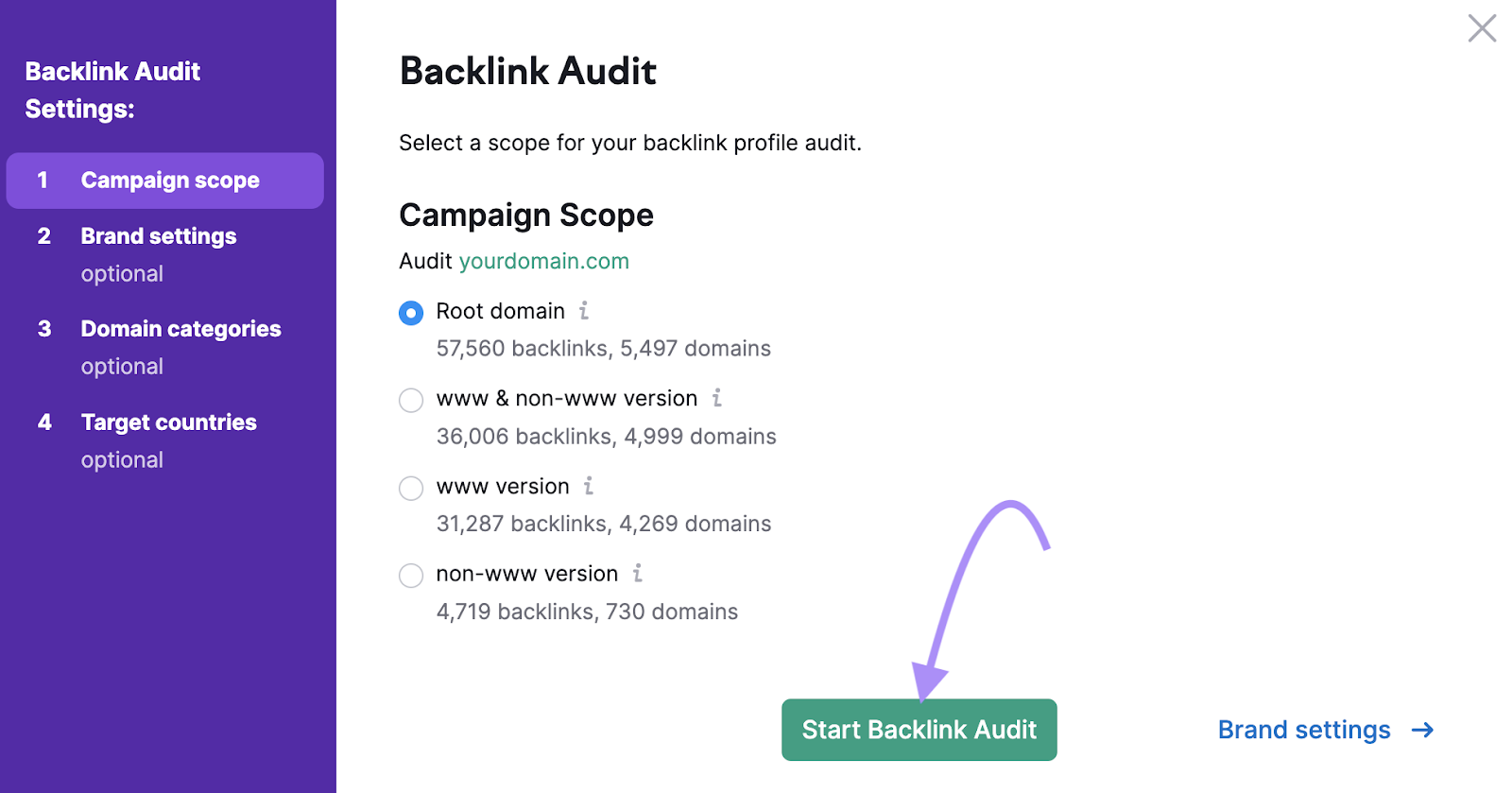
Then, sit back while the tool analyzes your backlinks.
When it’s finished, you can review the “Overall Toxicity Score” for a high-level understanding of the state of your backlink profile.
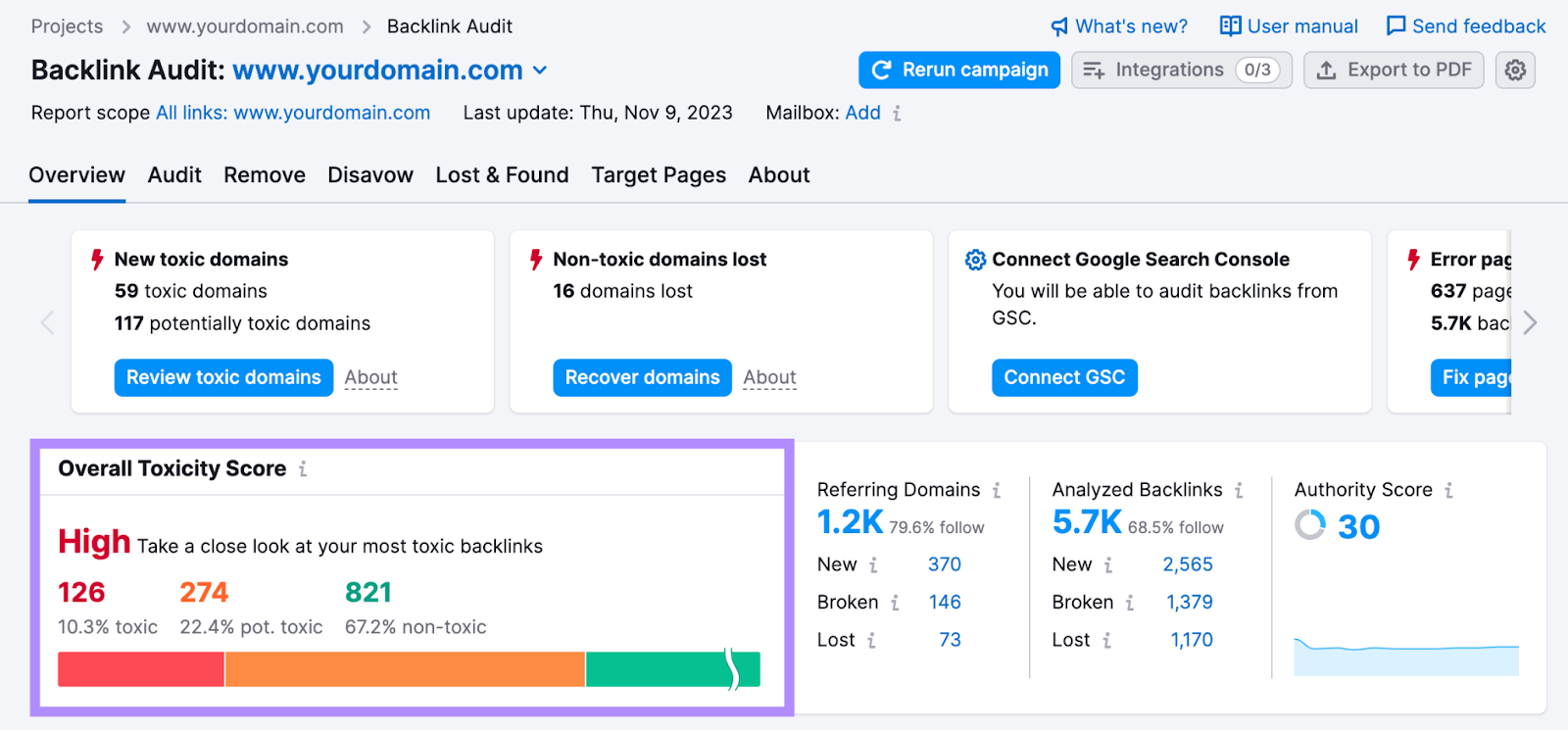
You likely don’t need to worry too much about eliminating toxic backlinks. Because Google does a good job of determining which ones are spammy and should be ignored.
Instead, focus on improving your score by gaining more high-quality links using the Link Building Tool.
Follow the Link Building Tool configuration instructions. And click “Start Link Building” in the setup wizard.
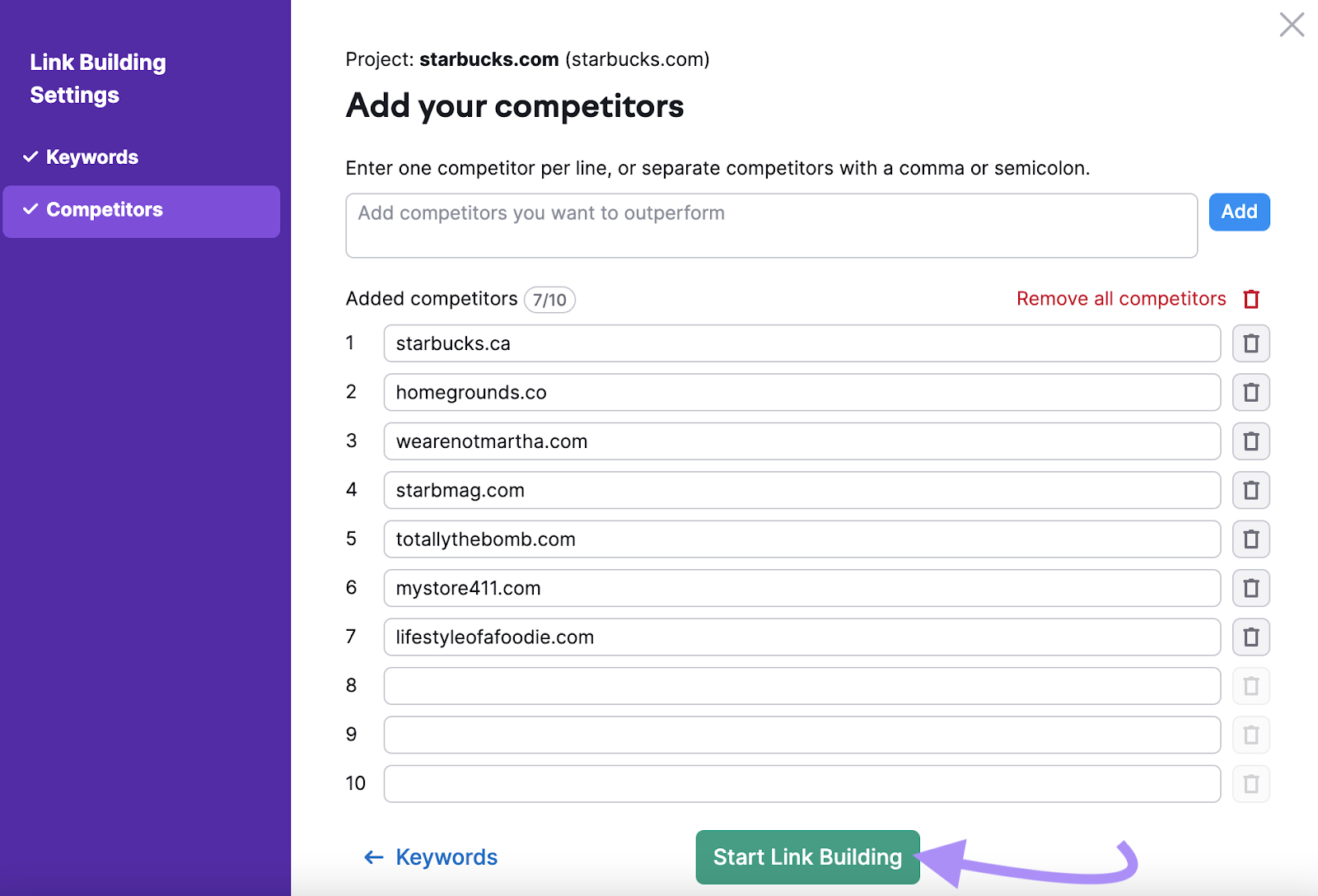
In the “Overview” report, click the “Prospects” tab.
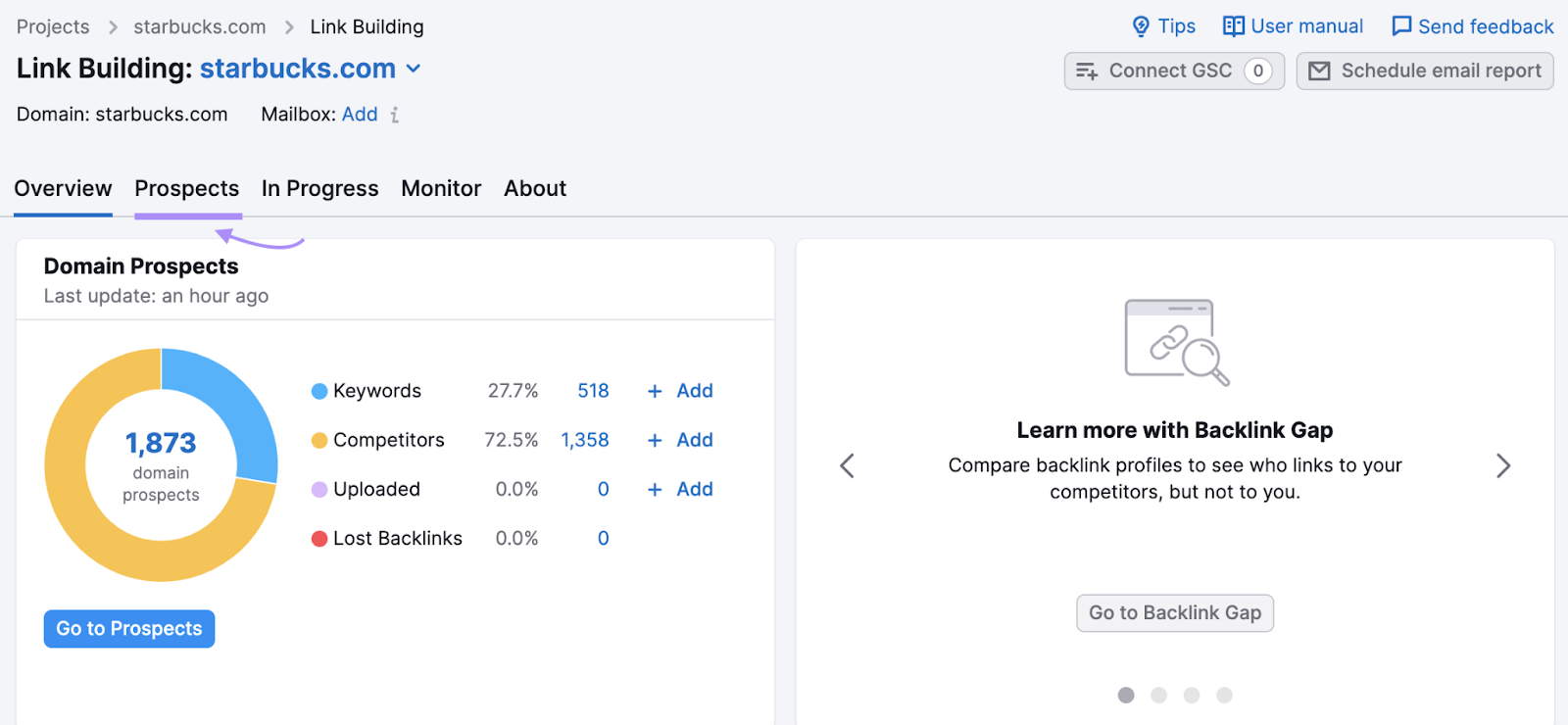
You’ll see a list of prospects you can reach out to for backlinks.
Review these to find the ones you want to contact. Check the box next to each, and click the “To In Progress” button at the top of the table.

Head to the “In Progress” tab. And click the “Contact” button next to a prospect you want to send an email to requesting a backlink.

From here, you can create a personalized message. And track your progress.
SEO Content Marketing Best Practices
Here are a few steps to ensure you create and distribute unique, valuable content that maximizes your visibility in search results:
Do Your Research to Plan Your Content
Conduct keyword research to understand what your target audience is actually searching for. So you can target them in your SEO content marketing strategy.
Keyword research helps you:
- Understand the language your readers use in their search queries
- Craft content that matches search intent
- Drive more relevant traffic to your site
Imagine you want to drive traffic to your project management tool’s website.
You can use Keyword Magic Tool to find relevant terms people are searching for.
Enter a seed keyword (a broad term related to your business you can use to find more relevant keyword ideas) in the search bar and click the green “Search” button.

The tool will generate a large list of keywords with data on search volume, search intent, and more.
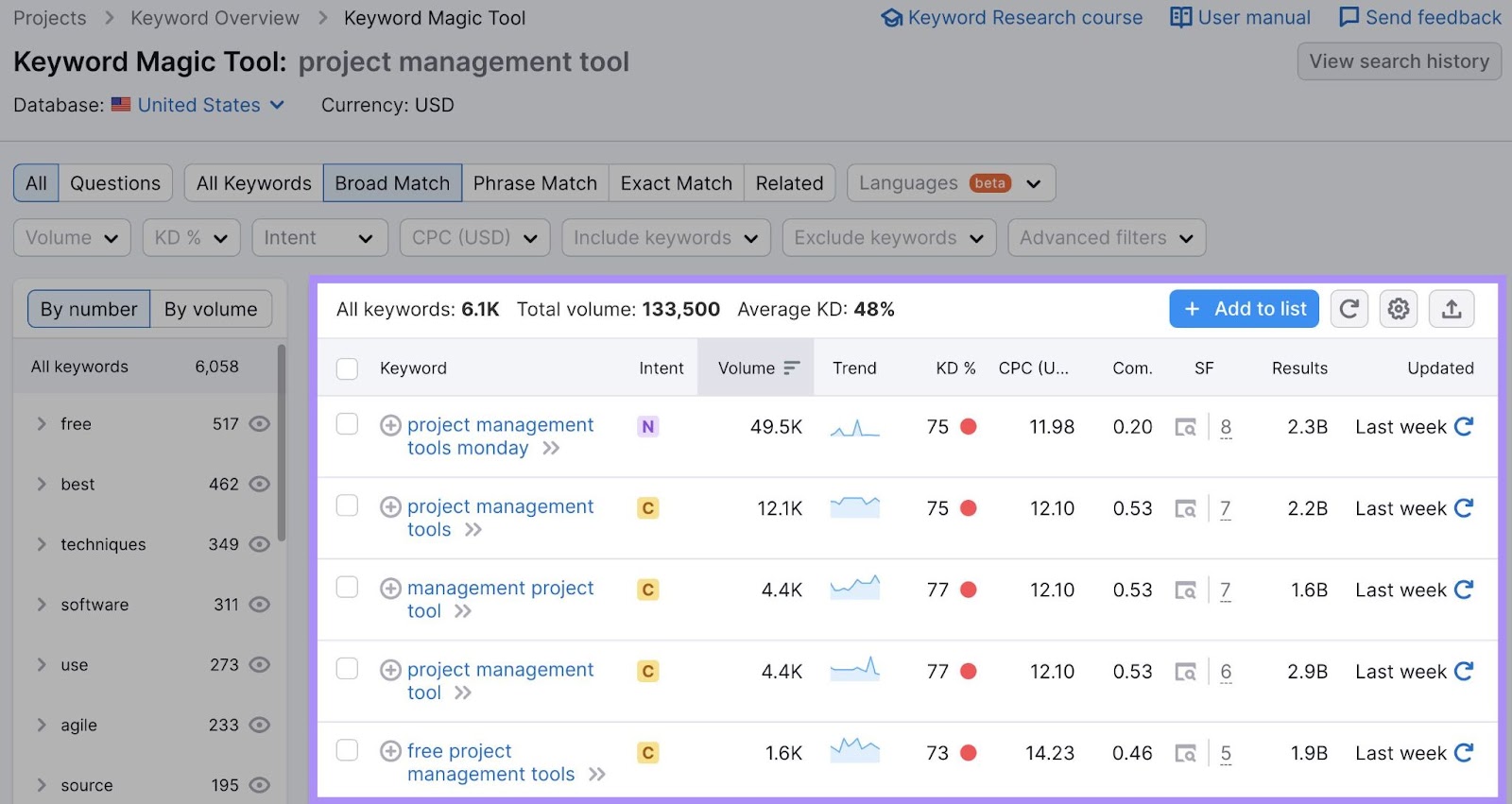
In the far left column, click on a recommended group and subgroup that are especially relevant to your business.
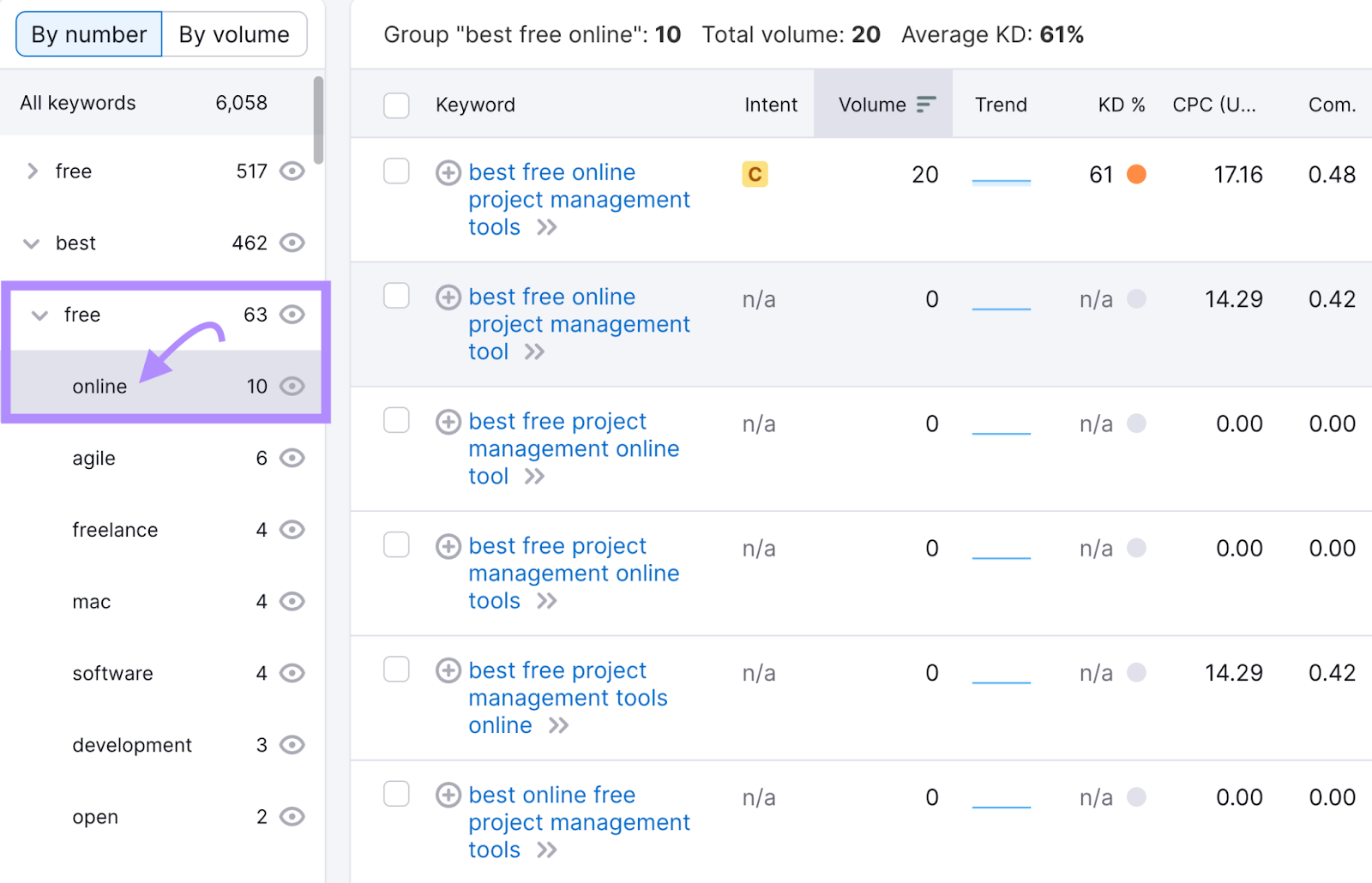
It can also be helpful to review a list of questions related to your seed keyword for blog posts or other informational content.
So, click on the “Questions” button in the upper left-hand corner to filter specifically for question-based keywords.
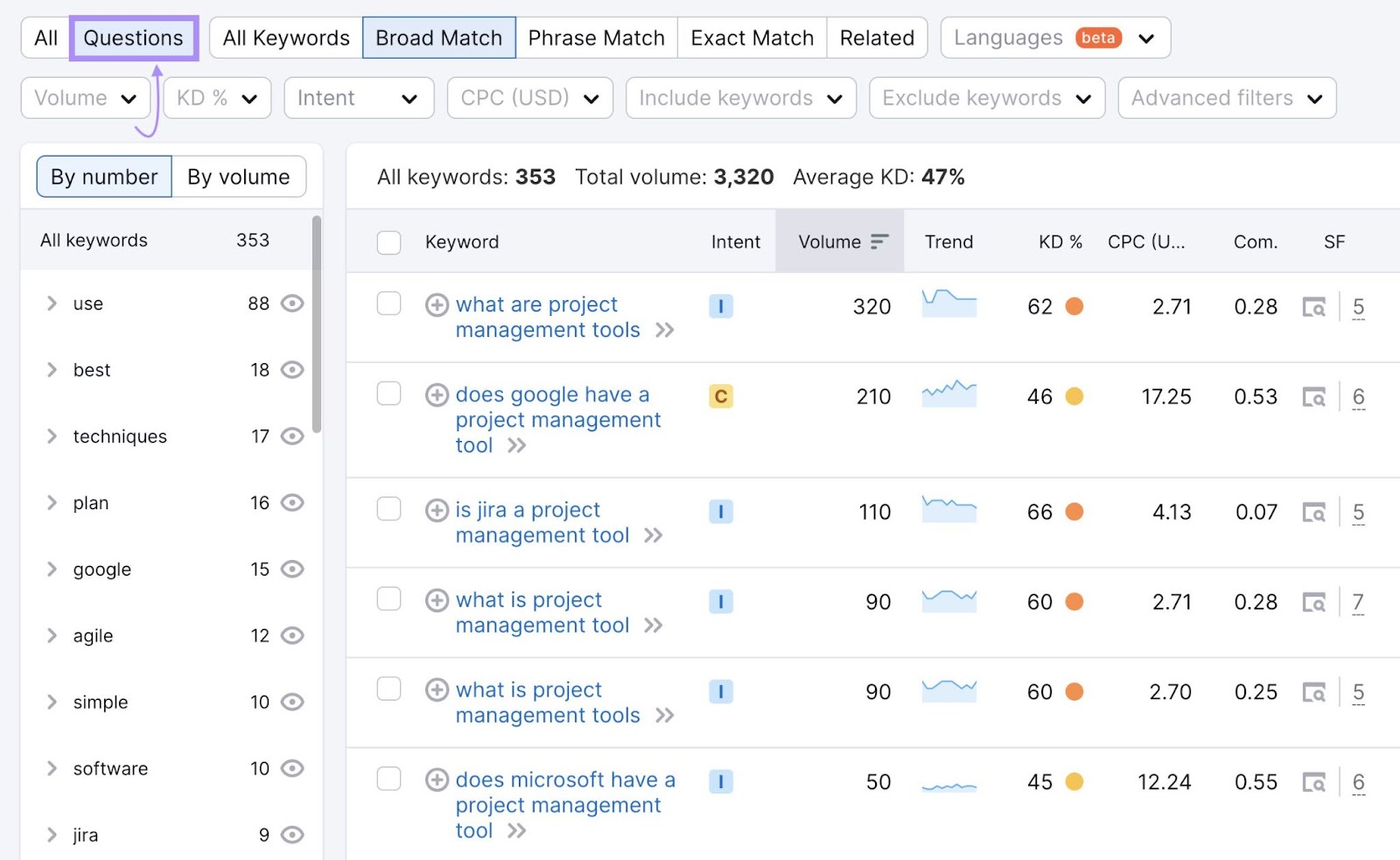
Craft High-Quality Content
Creating quality content focused on people is more likely to rank in search results. Because Google’s automated ranking systems are designed to find and display the most helpful and reliable information first.
The term “quality” can be subjective. So, you might find it helpful to consider Google’s Experience, Expertise, Authoritativeness, and Trustworthiness (E-E-A-T) acronym:
- Experience: The content reflects first-hand, personal experience with the subject matter. With the rise of generative AI chatbots like ChatGPT, this quality only becomes more important.
- Expertise: The author or publisher demonstrates significant knowledge on the topic
- Authoritativeness: The author or publisher addresses the topic and related areas from a position of authority. Which can be demonstrated by writing comprehensively about a topic on many pages on a website or by earning backlinks from reputable sources.
- Trustworthiness: The content comes from a trustworthy source. The three previous qualities all feed into this one, which Google says is the most important.
Note that E-E-A-T is not a ranking factor. But using E-E-A-T as a guide ensures your content is headed in the right direction.
And there are also some tactics you can use to differentiate your content:
- Talk to your company’s experts. Interviewing your internal team’s subject matter experts is a great way to surface different and compelling perspectives. This is especially valuable if it can add something beyond what’s already covered in existing content from your competition.
- Include original research. Original research data can include any data derived from the way people use your product, for example. But you don’t need to have a world-class product analytics setup to find quantitative insights. Try surveying your customers or others in your space, and then find out if there are any patterns.
- Write comprehensively. Addressing a topic with sufficient depth establishes your knowledge and experience. After reading the article, the reader shouldn’t have to consult any other resources to understand the topic well.
You can also use tools like SEO Writing Assistant to get ideas on how to improve your content even more.
To get started, click the green “+ Analyze new text” button in the upper left.
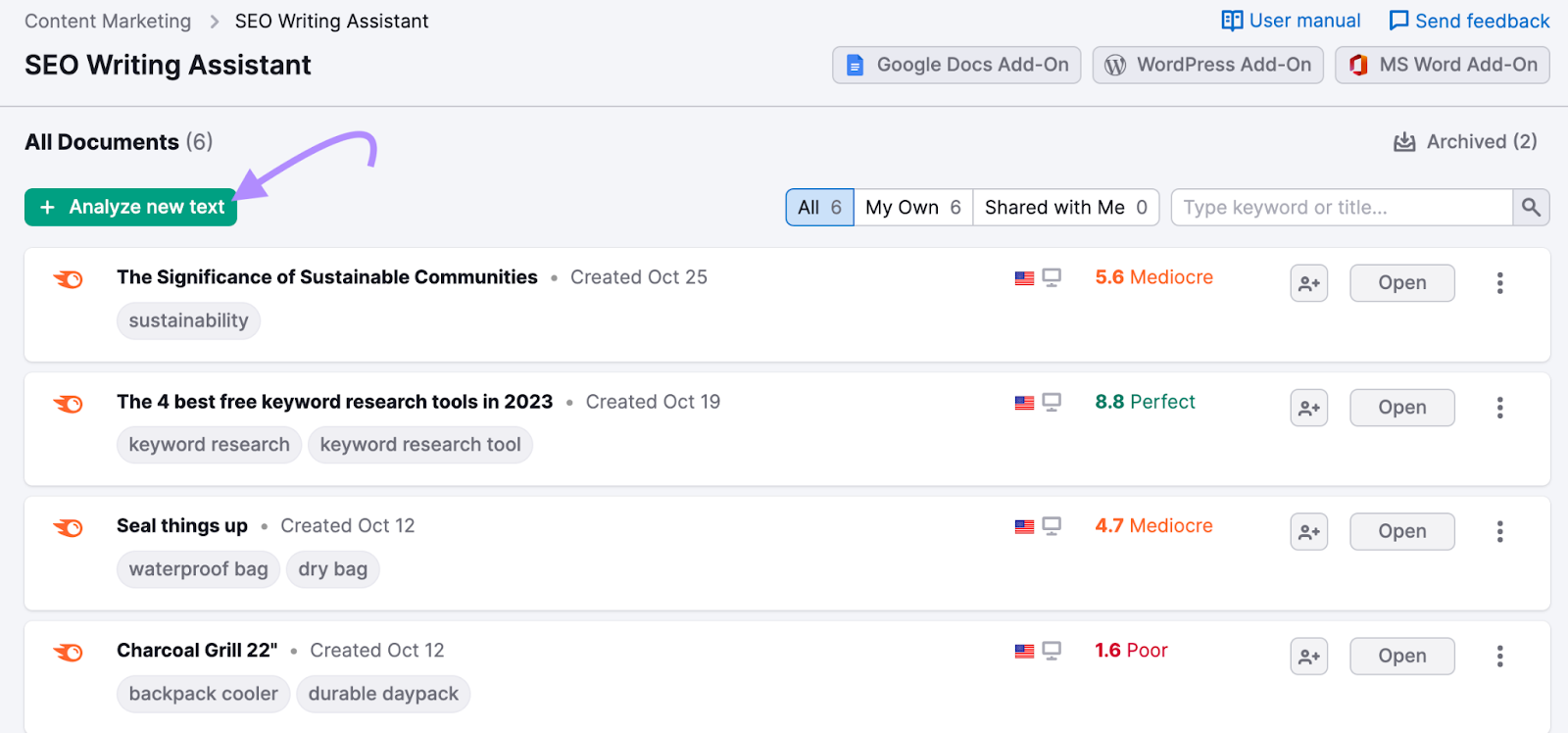
Then, either type your content directly in the editor or copy and paste it.
Then, add at least two keywords and click “Get recommendations.”
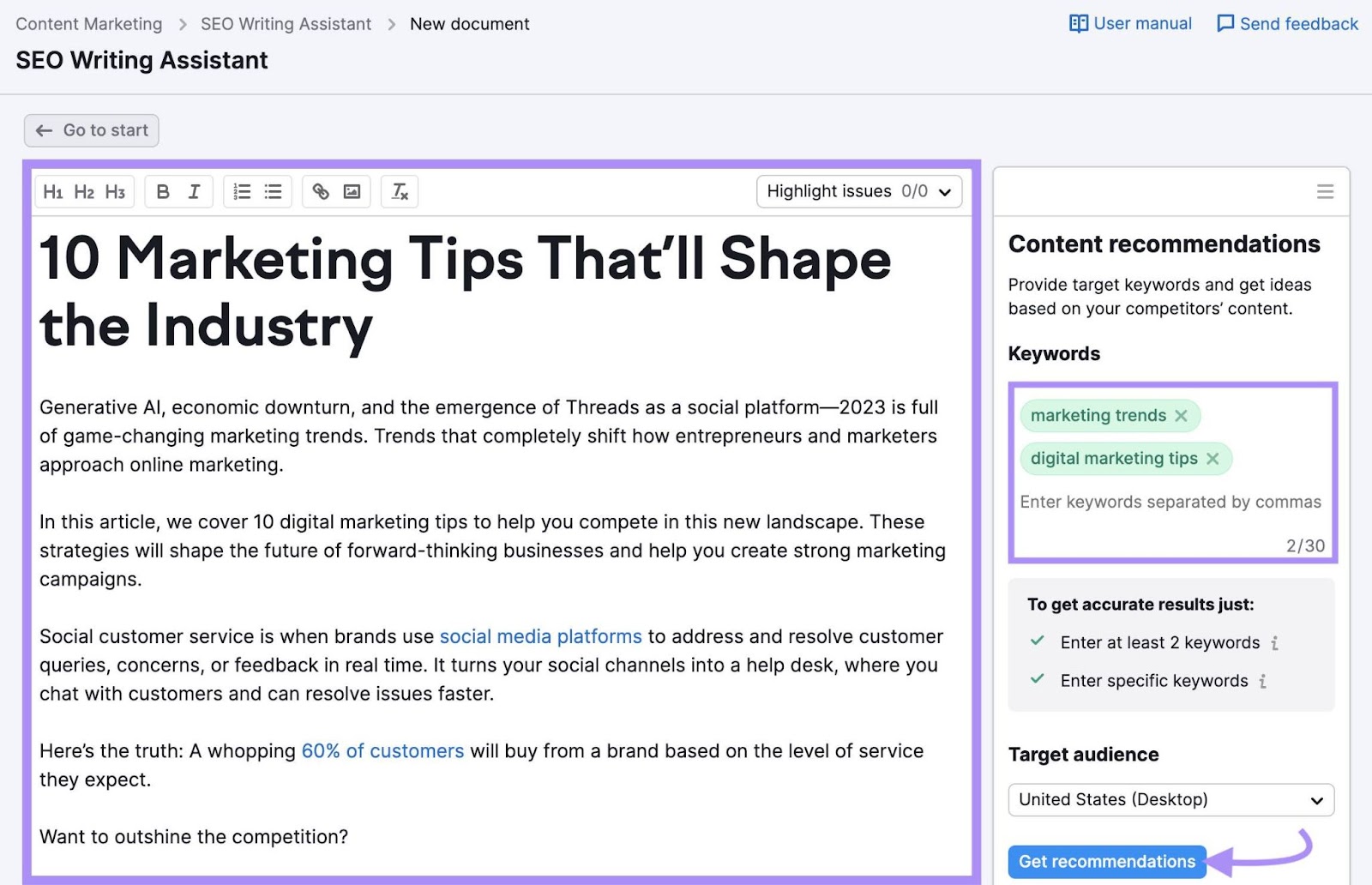
With the editor pulled up, you can review scores breaking down your content’s readability, SEO, tone of voice, and SEO.
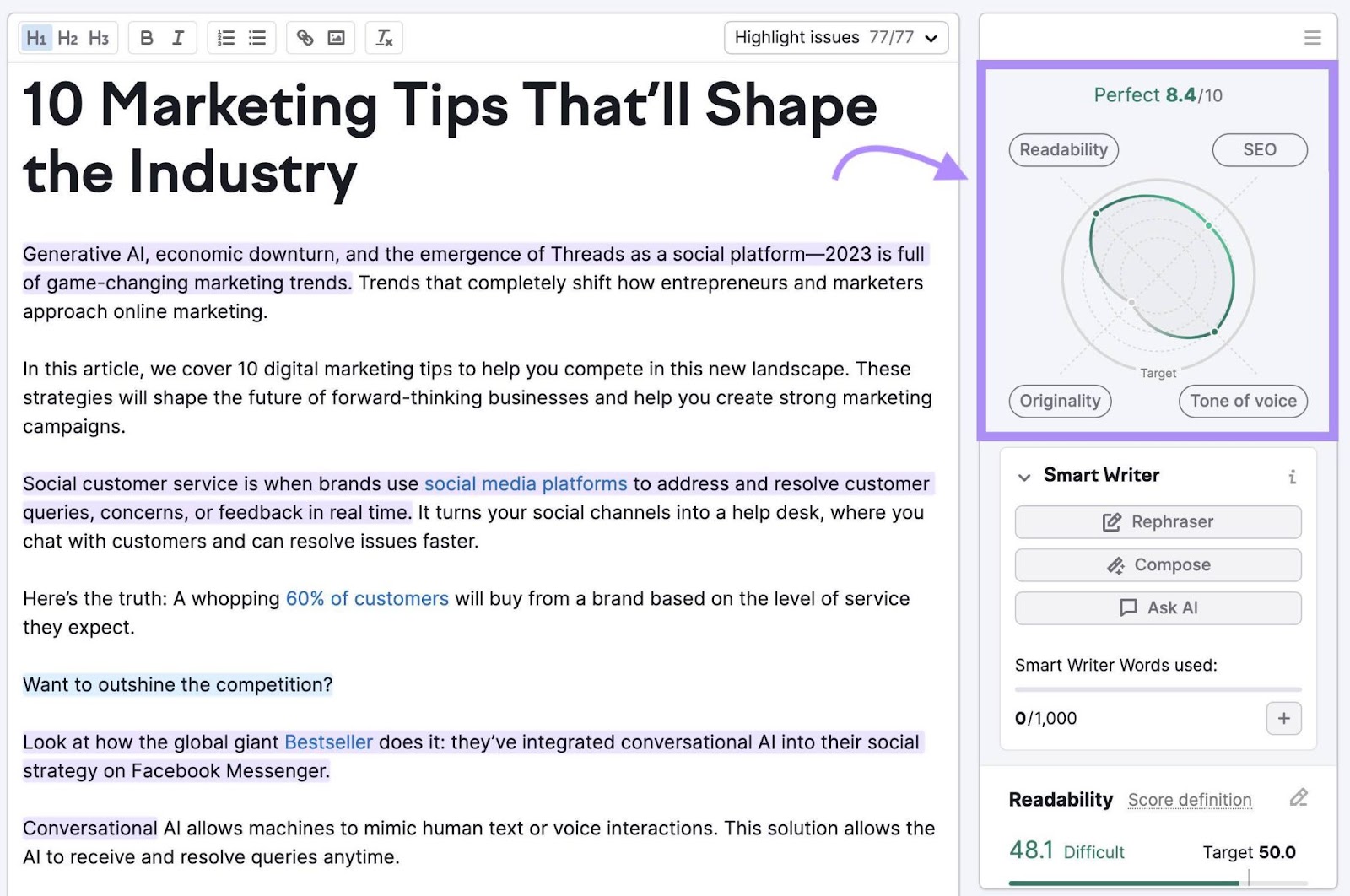
From the drop-down menu on the right, you can filter to review issues in your text related to one of those main categories.
For example, you can get suggestions to ensure your language is right for your audience by filtering for “Tone of Voice” and reviewing the passages highlighted in blue.

Incorporate the suggestions to improve your content.
Distribute Content Using Multiple Channels
Distributing the content you create for your site through channels like social media, email, and paid ads maximizes its visibility among target audiences.
Using multiple distribution channels like this gets your content in front of more people. And increases its chances of moving your audience through the buyer’s journey.
Here are some distribution channels to consider:
- Social ads: LinkedIn, Instagram, Facebook and other platforms include targeting options to gain impressions among specific audiences. And the built-in analytics tools make it easy to measure how each ad performs.
- Email newsletter: Your email list is a prime opportunity to distribute your content. You can even segment it into specific groups and include targeted content recommendations for each.
- Organic social posts: Social media platforms like LinkedIn and X (formerly Twitter) make it easy to share content with your followers. And when your followers interact with the content you share, it becomes visible to their networks.
Analyze Performance
Monitoring your SEO and content marketing performance gives you a better understanding of what’s working and what’s not. So you can make adjustments to improve.
You can use tools like Google Search Console and Semrush to measure your SEO results.
To get started with Google Search Console, you’ll need to work with the site owner to verify ownership of the web property if you haven’t yet.
Once it’s set up, go to “Search results” under “Performance” to view metrics like total clicks and impressions, average CTR, and average keyword ranking position.
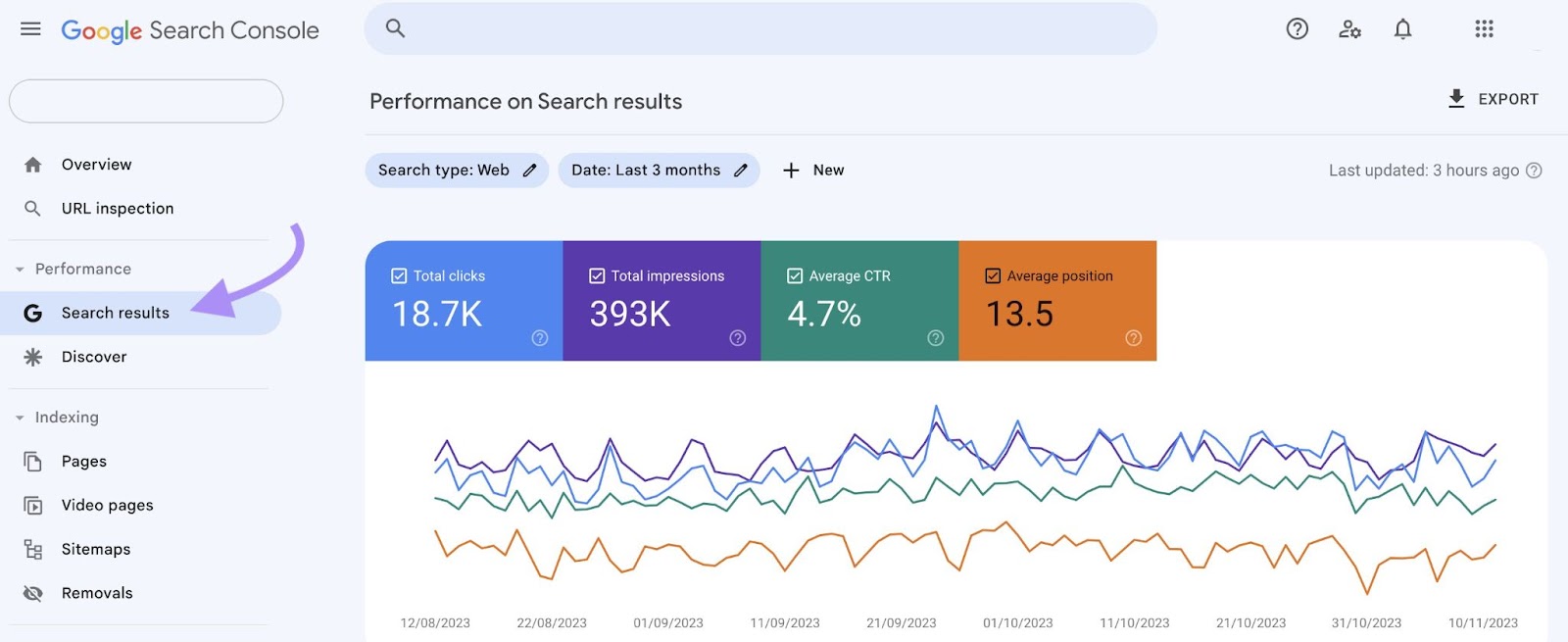
Another great option is the Position Tracking tool.
Follow the Position Tracking setup guide to configure the tool.
Once it’s done pulling data, you’ll be taken to the “Landscape” report.
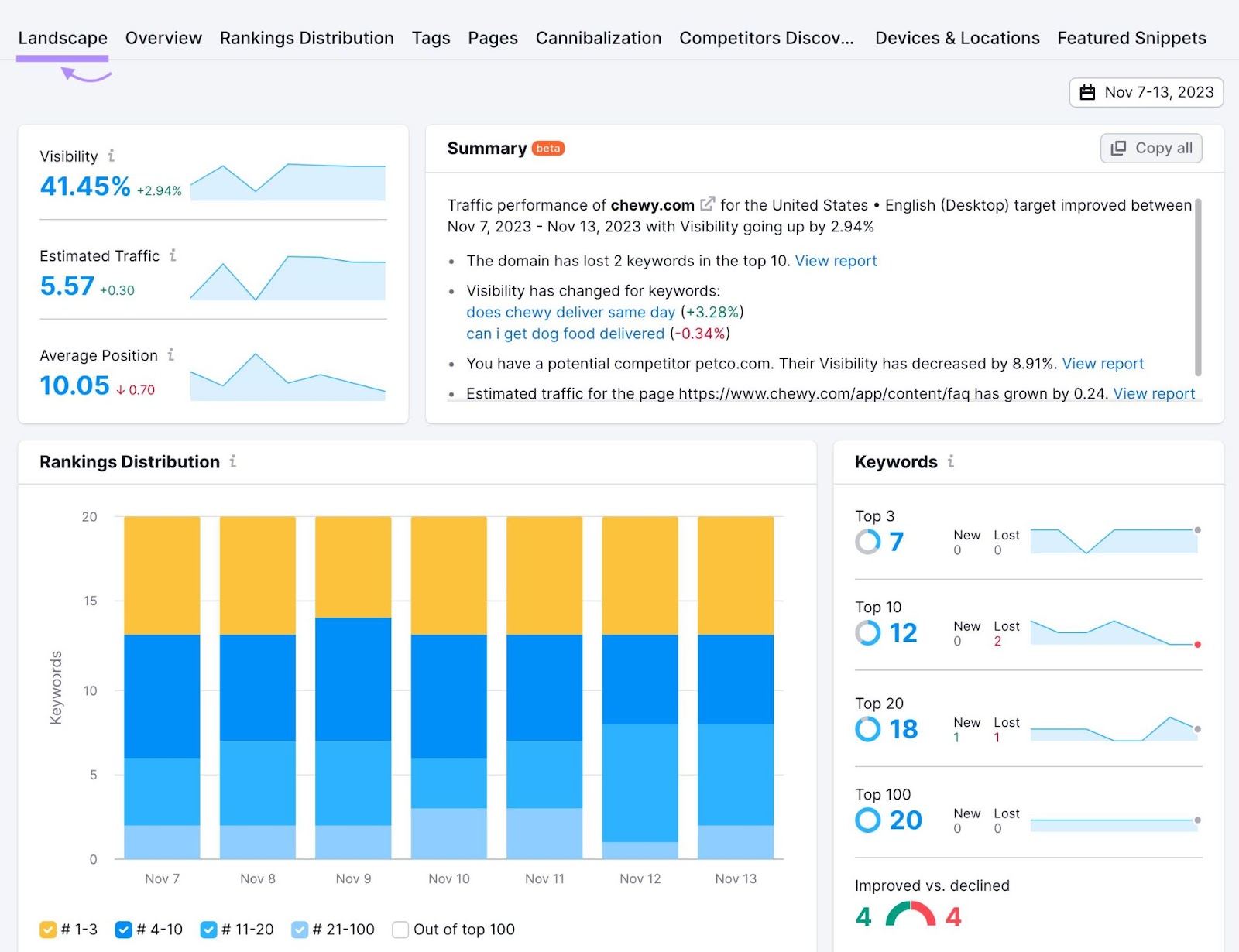
Here, you can get a high-level understanding of how your site is performing in search results.
Next, click the “Overview” tab. And scroll down to the table at the bottom.
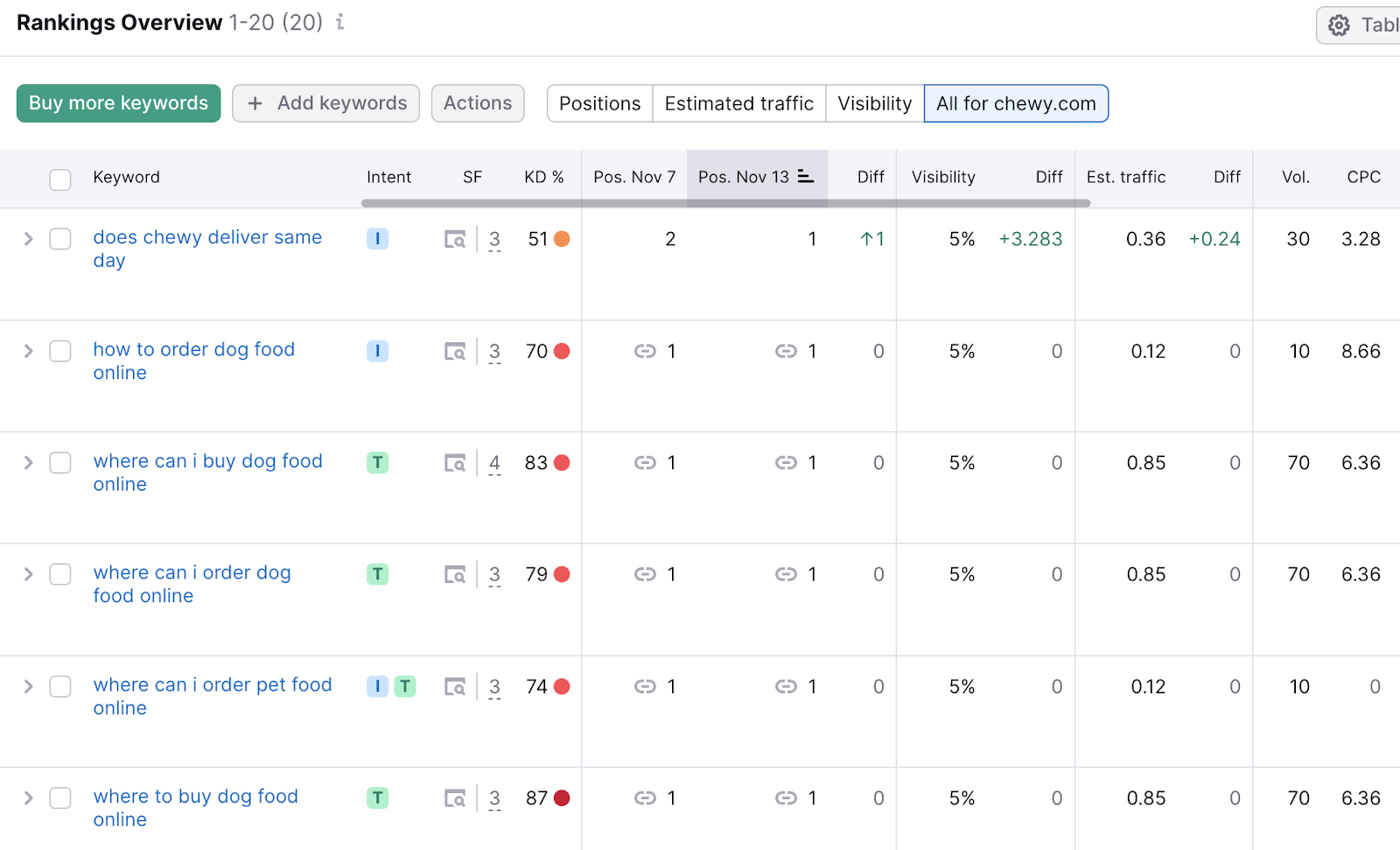
You can now see your positions for all keywords you’re tracking. And their changes over time. (The tool defaults to showing changes over the last seven days, but you can adjust the time range.)
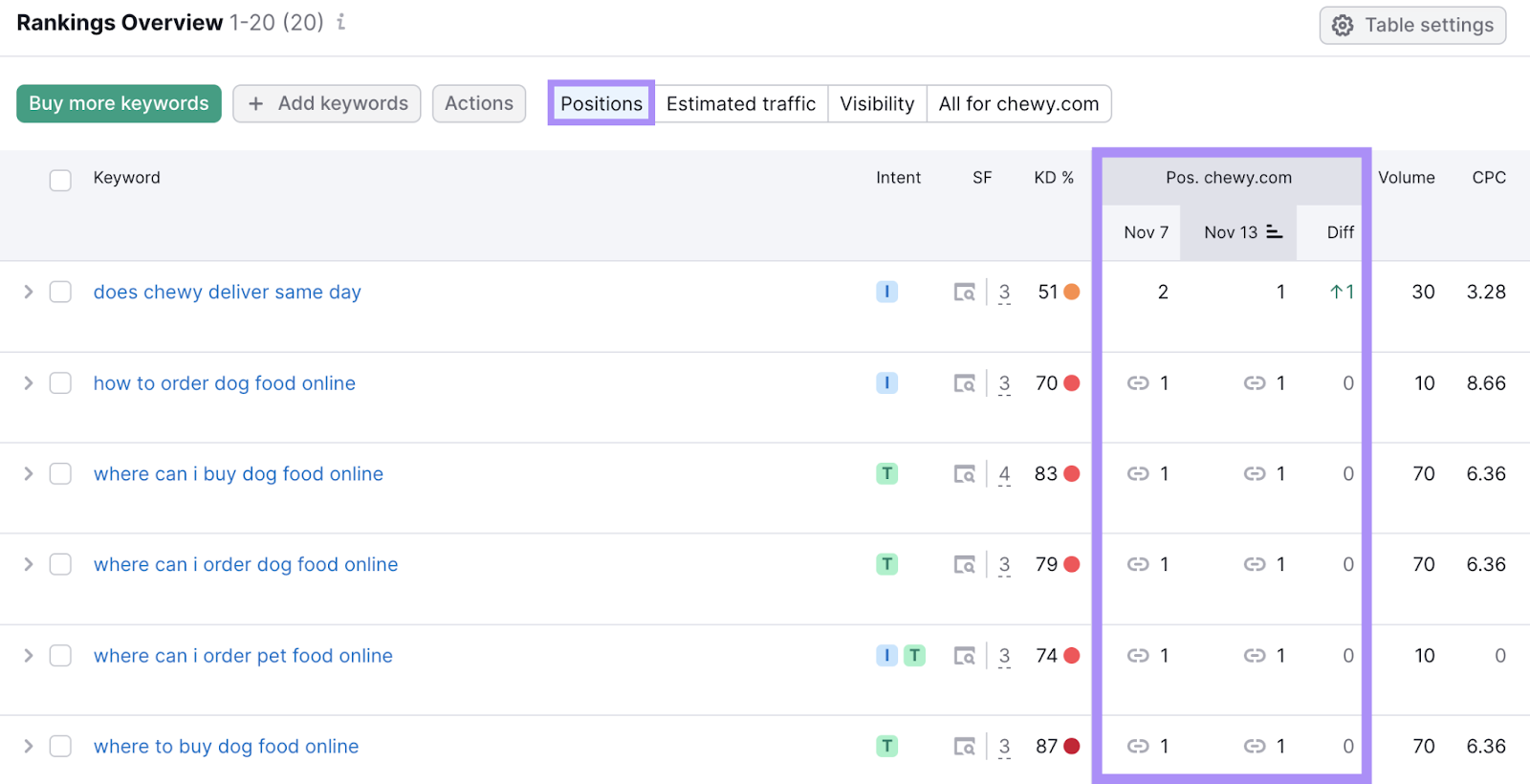
Keep an eye on your rankings and make note of any significant changes.
Higher rankings indicate your efforts are working. Lower rankings could suggest that you need to make some adjustments.
Combine Your Content Marketing and SEO Efforts
Making and sharing quality content is hard work. But the results are worth it.
Ready to take the next step with your SEO content marketing efforts? Semrush offers a suite of tools to take you to the next level.
Get started by conducting keyword research with the Keyword Magic Tool.
